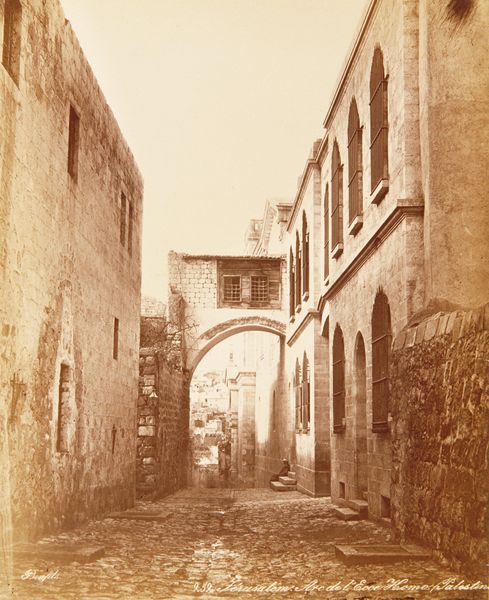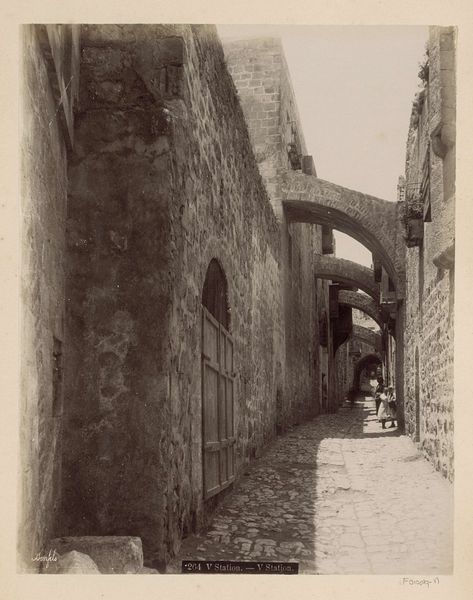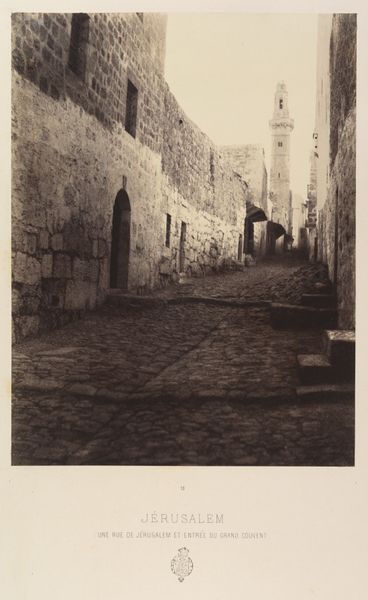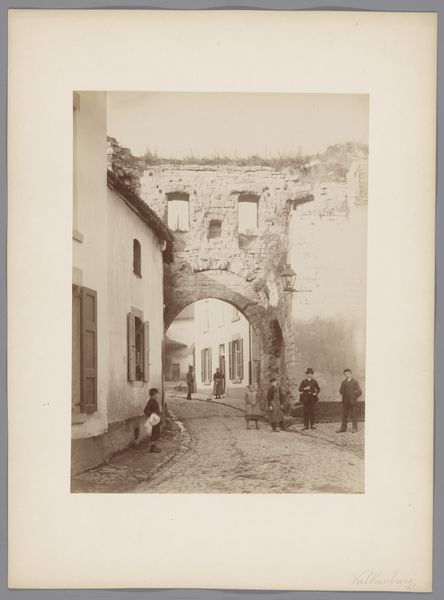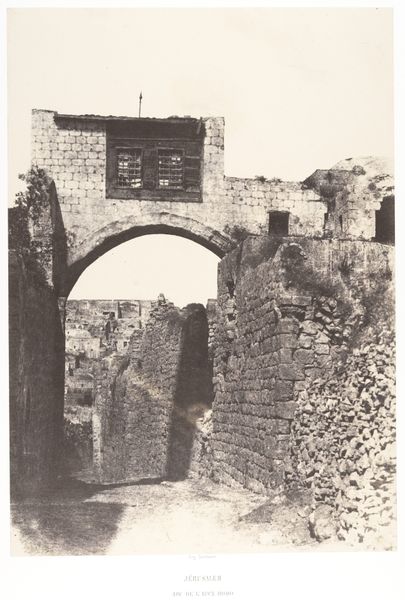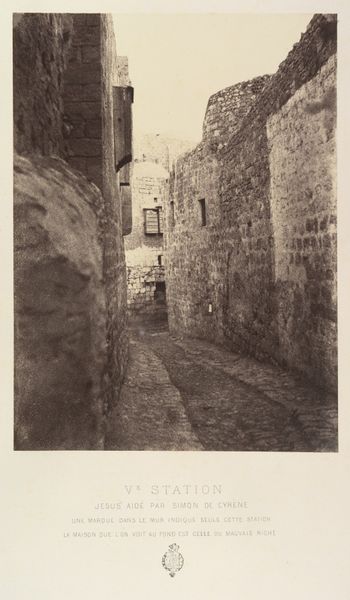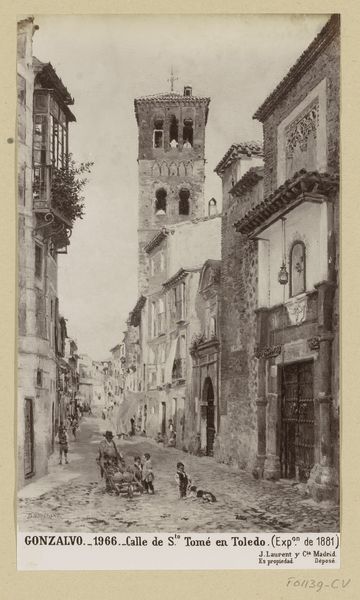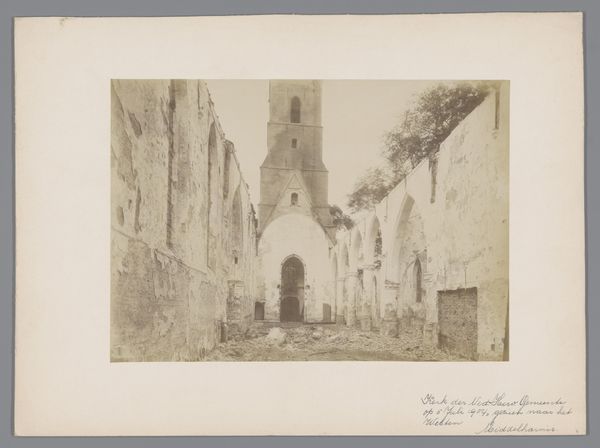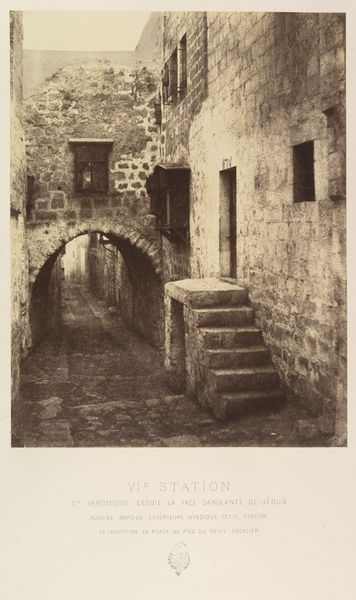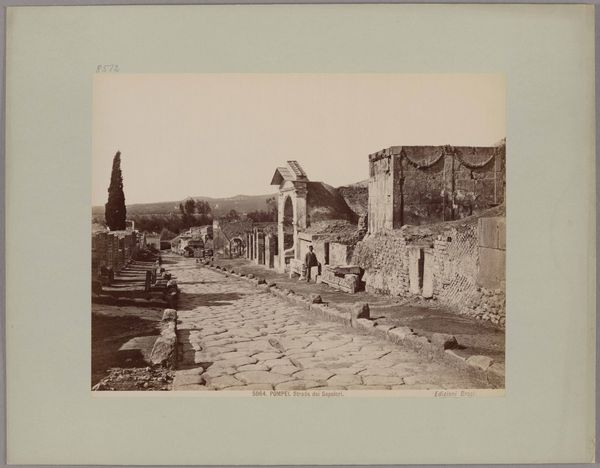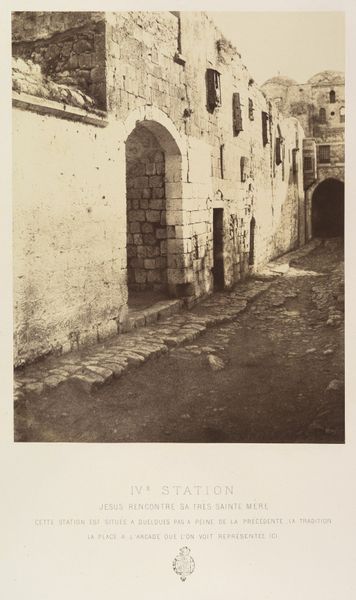
photography, gelatin-silver-print
#
landscape
#
photography
#
arch
#
orientalism
#
gelatin-silver-print
#
cityscape
#
street
Dimensions: height 281 mm, width 226 mm
Copyright: Rijks Museum: Open Domain
Maison Bonfils made this photograph of the Ecce Homo Arch on the Via Dolorosa in Jerusalem, and the image now resides in the Rijksmuseum. This albumen print encapsulates a moment in the 19th century when the Holy Land was being documented and commodified for Western audiences. The photograph visualizes the arch, believed to be part of the Roman Antonia Fortress, where Pontius Pilate presented Jesus to the crowd, uttering "Ecce Homo," or "Behold the Man." Bonfils, a French photographer, operated a studio in Beirut, catering to European tourists eager for authentic depictions of biblical sites. The image creates meaning through its visual codes. The stark, sunlit stone, the narrow street, and the distant view of the city evoke a sense of timelessness and historical weight. Consider the social conditions that shaped this artistic production: European colonialism, the rise of tourism, and the burgeoning market for orientalist imagery. The photograph not only documents a physical place but also reinforces a particular narrative about the Holy Land, one that is deeply intertwined with religious and political agendas. To understand the nuances of this image better, we might consult travelogues, missionary records, and colonial archives. This would provide context for the complex interplay of faith, commerce, and power that shaped the production and reception of such images in the 19th century.
Comments
No comments
Be the first to comment and join the conversation on the ultimate creative platform.
